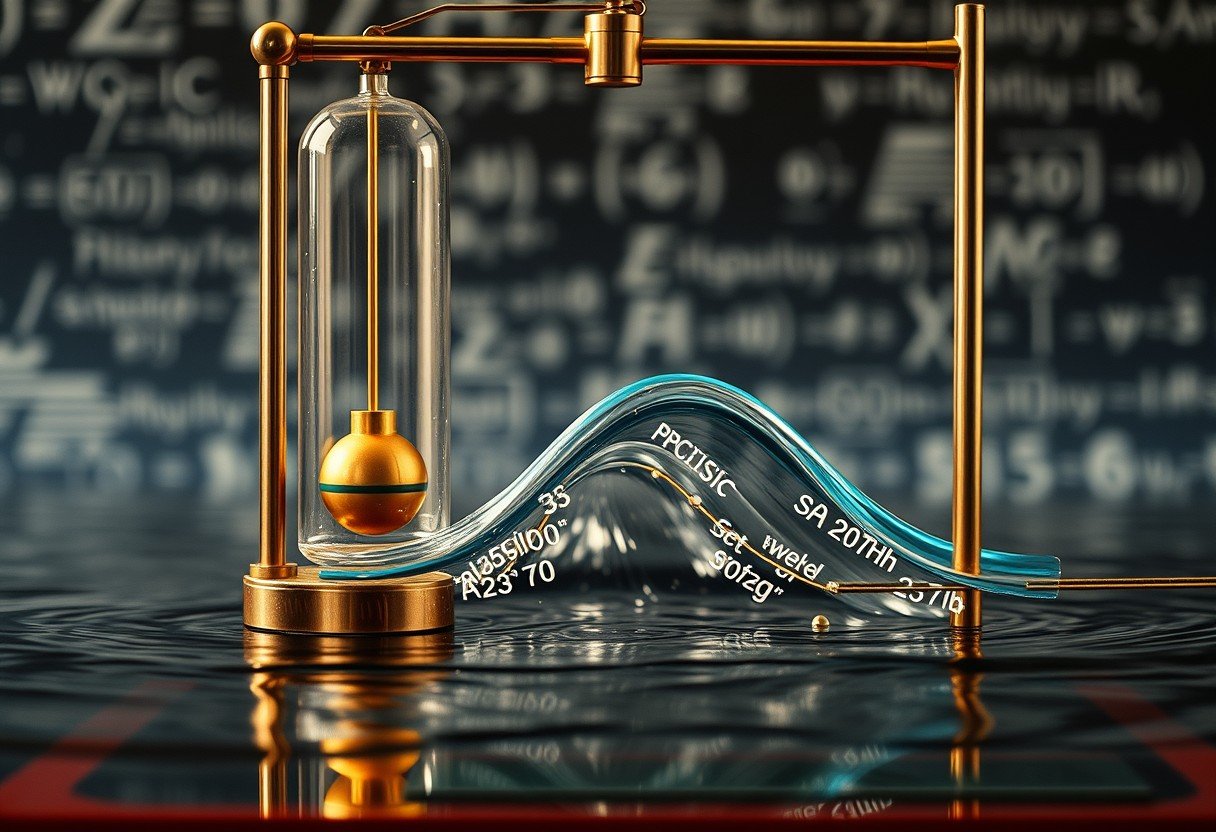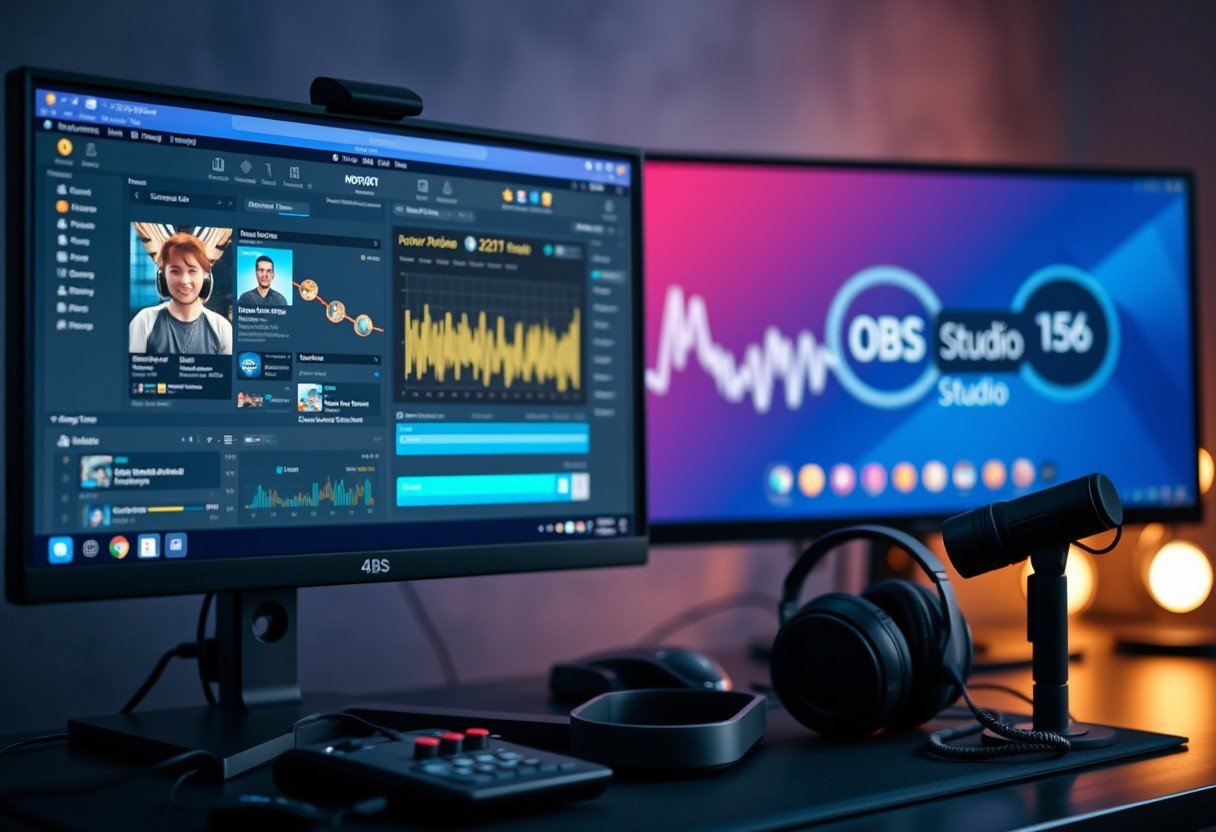When you change how an oscillator behaves, like making its cycle take twice as long, it directly impacts the waves it creates. If the period of an oscillator doubles, its frequency is cut in half. To keep the wave’s speed constant, which depends on the medium it travels through, the wavelength must also double. This fundamental concept is key to understanding everything from sound waves to light.
The Core Relationship between Period and Frequency
Before diving into wavelength and speed, it’s crucial to understand the connection between period and frequency. They are two sides of the same coin, describing the timing of an oscillation.
The period (T) is the time it takes to complete one full cycle. Think of it as the time between two consecutive peaks of a wave. Frequency (f), on the other hand, is the number of cycles that occur in one second.
They share an inverse relationship, which is a cornerstone of wave physics. The formula that connects them is simple: f = 1/T. This means that as one value goes up, the other must go down. So, if you double the period, you automatically cut the frequency in half. An oscillator that is slower (longer period) produces fewer waves per second (lower frequency).
How Wavelength Responds to a Change in Period
When the period of an oscillator doubles, the wavelength of the wave it produces also doubles, assuming the medium doesn’t change. Wavelength (represented by the Greek letter lambda, λ) is the physical distance between two corresponding points on a wave, such as from one crest to the next.
Imagine creating waves in a rope by shaking one end. If you shake it slowly (a long period), you create long, stretched-out waves. If you shake it quickly (a short period), the waves are bunched closer together.
This happens because the wave continues to travel forward at a constant speed. Since the frequency is halved, each wave has twice as much time to travel before the next wave begins, causing the distance between them (the wavelength) to double.
Why Wave Speed is Independent of the Oscillator
A common misconception is that changing the oscillator’s period or frequency will change how fast the wave travels. However, the speed of a wave is determined by the properties of the medium it is moving through, not by the source of the wave.
For example, the speed of sound depends on the air’s temperature and density, not how high or low the pitch of the sound is. Similarly, the speed of a wave on a guitar string is determined by:
- The tension of the string
- The mass per unit length of the string
Changing how fast you pluck the string (the frequency) will change the wavelength, but the wave will still travel along the string at the same speed. Therefore, when the period of the oscillator doubles, the wave speed remains constant if the medium stays the same.
Putting It All Together with the Wave Equation
The relationship between wave speed, frequency, and wavelength is summarized in one essential formula: Wave Speed (v) = Frequency (f) × Wavelength (λ). We can use this to see exactly what happens when the period doubles.
Since we know frequency is the inverse of the period (f = 1/T), we can substitute it into the wave equation. This gives us v = (1/T) × λ, or more simply, v = λ / T.
This version of the equation makes the relationship crystal clear. If the wave speed (v) must remain constant, and you double the period (T), the wavelength (λ) must also double to keep the equation balanced.
| Property | Original State | After Period Doubles |
| Period (T) | T | 2T (Doubled) |
| Frequency (f) | f = 1/T | f/2 (Halved) |
| Wave Speed (v) | v (Constant) | v (Remains Constant) |
| Wavelength (λ) | λ = v × T | 2λ (Doubled) |
This table provides a simple overview of the interconnected changes that occur.
Practical Implications in Science and Technology
Understanding these principles is not just an academic exercise; it has huge practical importance in many fields. In telecommunications, engineers manipulate frequency and wavelength to transmit data through radio waves without interference.
In music, tuning an instrument involves adjusting the properties of the medium (like string tension) to change the wave speed, which in turn affects the frequency (pitch) produced at a certain wavelength. Even in medicine, ultrasound imaging relies on controlling the frequency of sound waves to create images, where the wavelength determines the resolution of the image.
Frequently Asked Questions
What is the direct effect on frequency if the period of an oscillator doubles?
The frequency is inversely proportional to the period (f = 1/T). This means if the period doubles, the frequency is cut in half. The oscillation becomes slower, resulting in fewer cycles per second.
Does the wave speed change when the period doubles?
No, the wave speed does not change if the medium remains the same. Wave speed is a property of the medium the wave is traveling through, such as the tension in a string or the density of air, not a property of the wave’s source.
How does wavelength compensate for the change in frequency?
Because the wave speed must remain constant (v = f × λ), if the frequency (f) is halved, the wavelength (λ) must double to maintain the same speed. The waves become longer and more spread out.
Can you give a simple analogy for this relationship?
Imagine walking and dropping a stone every few steps. Your walking speed is the “wave speed.” If you double the time between dropping each stone (the “period”), the distance between the stones on the ground (the “wavelength”) will also double, even though you are walking at the same speed.









Leave a Comment